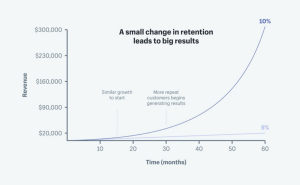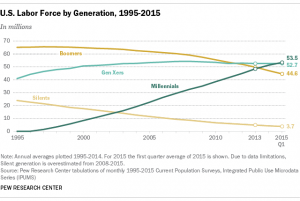60 major stock exchanges in the world valued USD 69 Trillion (The Money Project) and to get your ticket to the mad circus, you don’t need a lot of money. In fact, there’s no standardized amount to invest in a particular time. Take this as an immediate lesson as you plan to start investing in the stock market or upscale your existing portfolios.
The greater concern, however, is your preparedness at the personal front; your cost of living, financial liabilities, minimum income stability, and some basic understanding is what qualifies you. As a highly volatile marketplace, stock trading deserves deeper learning and a smarter approach, more than just blind gambling that most of you fantasize about. Stop doing that right away!
Henceforth, if you are done with the basic trading and want to take the next big step, go through the following strategies that will help you expand your portfolios and uncover a smarter investor out of the amateur you.
Strategy No 1
Try value investing and hold on to it in the longer run
Purchasing stocks that are trading lower than their intrinsic value and sell them as soon as they cross they normalize is the most tempting method of trading. However, identifying such stocks may not always be simple. Value Investing works on the skills of being able to foresee some irrationality in the markets. For instance, abnormal climatic conditions could lower the demand for certain commodities, drop their production and ultimately lower their standings on the stock exchange. And to hone this knack, you could try the following tools –
Earnings per Share Calculator
Simply, divide the profits disclosed by a company by the current cost of the share. A steadily rising EPS is a positive sign for you to invest in the company’s stock.
(P/E) Ratio – Price Earnings Ratio
Before you develop the innate aptness to accurately predict the stock fortune, make use of the Price-Earnings Ratio, a proven tool to attest undervalued stocks. Divide the stock’s price by its income per share. Lower the output, greater is the potential of the stock to revert with higher returns.
Strategy No 2
Hire an expert to assist you with the best trading practices
Seeking professional assistance from those who burn the midnight oil studying the exchanges is the most popular approach to getting into stock investing. This could be a freelance stockbroker, a full services agency or a digital platform that based on your preferences, reverts with the best available bids. Therefore, whether or not to invest in a particular industry, bet upon value discovery funds or attempt riskier investments, hold on to the stocks or sell them, are tough choices done by the expert you have authorized.
As a highly recommended practice, hiring a full services agency that manages the entire life cycle of your stock investments can help to surpass delays and achieve personal targets, sooner.
However, despite dependable expertise available across media platforms, amateurs are prone to acquiring cold feet sooner than they should.
As per Jason Zweig, Wall Street Journal, value funds in the large stocks category returned an average of 6.7% because many quit in between. He asserts, holding on to your stocks and allowing them to flourish in the long run is the best bet but is disappointed by the humdrum attitude of the beginners.
Strategy No 3
Look beyond – master the art of Growth investing
This will not come easy but needs a tentative kick start. Growth investment is the space wherein the real game is. Not just it demands a profound understanding of the exchange trends, but it also requires industry knowledge, about the products, the underlying technology, and its socio-economic impact.
Following up with which, you shall be able to foresee the scope and ultimately the opportunities available to mint money.
For example, predicting whether or not Cannabis products will gain acceptance across nations. If they do, any existing players on the stock could be highly lucrative. Similarly, business entities that are transitioning fast towards AI-enabled customer service verticals (banks deploying chatbots, etc.) could earn an edge over others still hiding behind the hood.
At the crux of it, is a growth investor’s ability to research and find some credibility in a newly pitched service and its potential to grow steadily, if not necessarily explosively. Not to miss, the accountability of a company is showing consistent growth in the past is a great tool to make the final call.
Going Forward
Decode the unpredictable character of investing
Investment outputs have a peculiar character –they are flexible yet potent enough to write a ‘rags to riches’ (or the way around) stories, every moment! Stocks must be reimagined as fallen businesses trying to reclaim their market while the time needed for the transition is directly proportional to your returns. Look at the greater big and don’t be swayed by short term knock-outs. Ultimately, stocks offer umpteen opportunities for millions of amateurs and experienced investors to grow their money, control debts and are effectively prepared for those rainy without income.
Business & Finance Articles on Business 2 Community
(104)
Report Post




